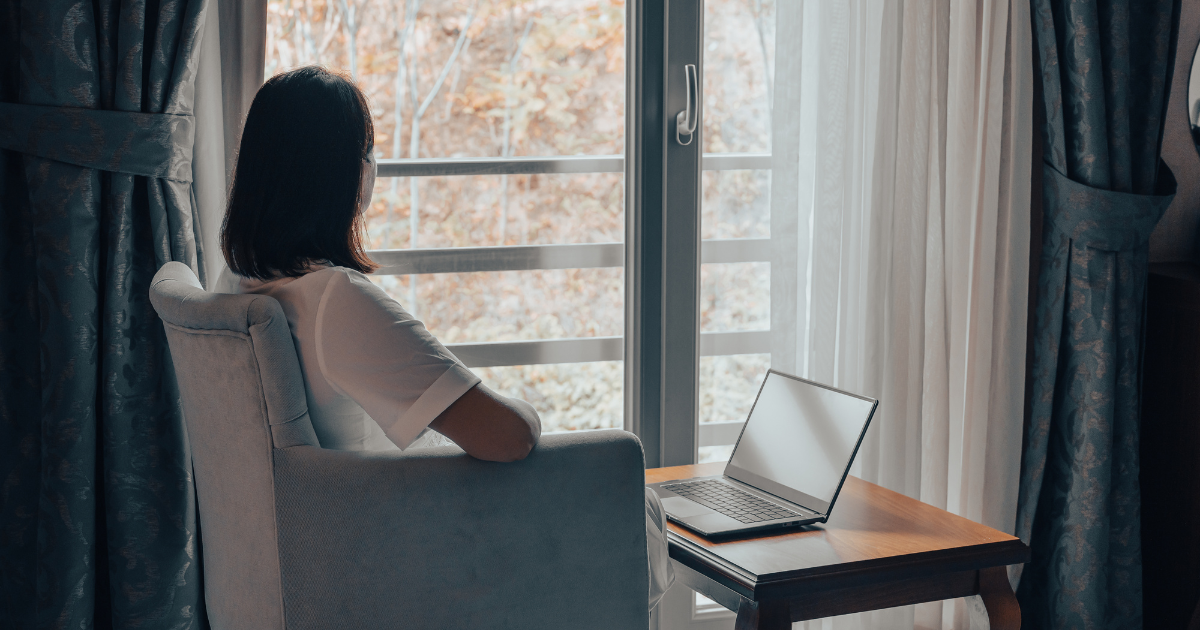Seasonal Affective Disorder (SAD) is a type of depression that impacts people during the fall and winter months due to lack of sunlight. Lack of sunlight can disrupt the body’s internal clock, leading to changes in mood and sleep patterns. If you struggle with depression or anxiety, seasonal affective disorder may make your symptoms worse during certain times of the year.
Symptoms of Seasonal Affective Disorder may include:
- Feelings of sadness
- Listlessness or low energy
- Fatigue
- Loss of interest in things you used to enjoy
- Difficulty concentrating
- Feelings of worthlessness, sadness, and depression
- Feelings of hopelessness
- Changes in sleep pattern and appetite
- Increase in alcohol consumption
Seasonal affective disorder is treatable.
Treatments for managing seasonal affective disorder include:
Light Therapy: One of the primary causes of SAD is reduced exposure to natural sunlight. Light therapy, or phototherapy, involves sitting in front of a bright light box that mimics natural sunlight. This treatment has been proven effective in alleviating symptoms of SAD by regulating circadian rhythms and boosting serotonin levels. Experts recommend incorporating light therapy into your daily routine, particularly in the morning, helping to reset your circadian rhythm.
Get Outside: Besides light therapy, increasing your exposure to natural sunlight is crucial for managing SAD. Arrange your workspace or living area to allow more natural light, open curtains during the day, and spend time outdoors whenever possible. Even on cloudy days, natural light exposure can positively impact your mood and help regulate your body’s internal clock. You don’t have to take up skiing or particularly enjoy cold-weather hobbies to benefit from being outdoors during winter. A simple walk around the block can help improve your mood and increase your exposure to sunlight.
Keep Your Sleep Consistent: Disruptions in sleep patterns are common among individuals with Seasonal Affective Disorder. Establishing a regular sleep schedule, including a consistent bedtime and wake-up time, can help regulate your body’s internal clock and improve your sleep quality. Avoiding stimulants like caffeine and electronic devices before bedtime can also improve sleep hygiene.
Stay Active: Regular physical activity is a powerful tool for managing depression, including SAD. Exercise releases endorphins, the body’s natural mood lifters, and can help counteract feelings of fatigue and lethargy associated with SAD. Aim for at least 30 minutes of moderate-intensity exercise most days of the week, whether it’s a brisk walk, yoga, or other enjoyable activities.
Mindfulness and Relaxation Techniques: Practicing mindfulness and relaxation techniques, like deep breathing exercises, yoga, journaling, and meditation, can be beneficial for managing SAD symptoms. Incorporating relaxation techniques can help reduce stress, improve focus, and enhance overall well-being. Incorporate mindfulness practices into your daily routine, especially when you feel overwhelmed or anxious.
Socialize and Connect: Isolation can exacerbate symptoms of Seasonal Affective Disorder. Make an effort to maintain social connections and engage in activities with friends and family. Even if it’s challenging to muster the energy, try to spend time with friends and family.
Plan Enjoyable Activities: Intentionally scheduling activities that bring you joy and fulfillment can counteract the impact of SAD. Whether it’s a hobby, a creative pursuit, or spending time in nature, incorporating enjoyable activities into your routine can provide a sense of purpose and a more positive mindset.
Seek Professional Support: If your symptoms persist or worsen, it’s essential to seek professional help. Mental health professionals can help with therapeutic interventions tailored to your needs—seasonal Affective Disorder by addressing negative thought patterns and developing coping strategies.
Talk To Your Therapist: If you’re already engaged with a psychologist or psychiatrist, let them know your symptoms worsen during fall and winter. Advise them of any changes to your mental health, especially if you’re feeling a worsening of depression symptoms. They may be able to recommend other treatments, including CBT, or make medication or therapeutic recommendations to help alleviate your symptoms.
Seasonal Affective Disorder Treatment In Los Gatos and San Jose
Managing Seasonal Affective Disorder requires a holistic approach that addresses the condition’s physical and emotional aspects. There are many ways you can take proactive steps toward alleviating the impact of SAD on your mental health this winter. Everyone’s experience with SAD is unique, so finding the best strategies for you may take time. With patience and persistence, it is possible to manage and cope with Seasonal Affective Disorder effectively.
At Lumos Clinical Research Center, we offer help, guidance, and support. Contact us today to learn more about our comprehensive mental health services. We have convenient locations in San Jose, CA, and Los Gatos, CA.

